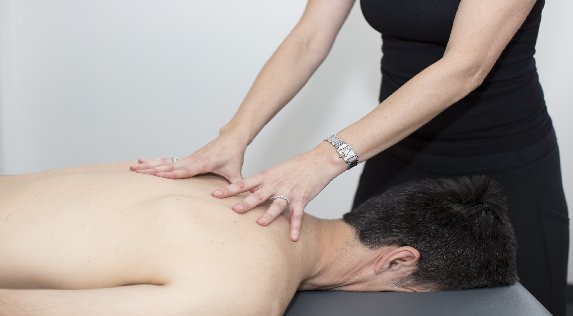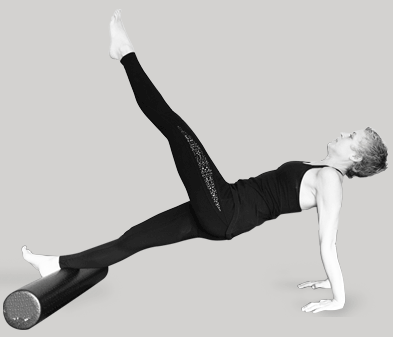
Did you know that by the age of 30, most people will have some form of back pain including degenerative changes to your spine and disc disease. Symptoms can range from mild discomfort and stiffness at the end of the day to severe debilitating pain and limited movement. Statistics regarding back pain are alarming. 8 out of 10 people will, at some point in their life endure back pain. Sound familiar? Take control and find a solution to help you feel better
There is a lot on the market to help you navigate what will work best for you. Did you know,
exercise relieves pain
Most people don’t associate exercise with pain relief but when it comes to discs and the health of your spine, exercise is an elixir. It encourages blood flow enhancing circulation and builds up the supporting structures like your trunk muscles to lessen the impact of pain and degeneration on your spine and your discs.
THE ANATOMY OF YOUR BACK
Your spine is a complicated structure. In a healthy adult spine, there are 26 vertebrae, which run from the base of your skull down to the rear of your pelvis. Together, with the ribs and sternum, the skeletal foundation of the torso is created.
The vertebral column encases and protects the fragile spinal cord. Assisted by the muscles of the core, the spine supports the head, maintains upright posture, and facilitates a multitude of movements including bending and twisting. Between each vertebra are intervertebral discs. The discs are composed of a tough outer layer of fibrocartilage arranged in concentric rings, which encase a soft jelly-like substance. The discs act as shock absorbers for the body in that they compress to allow for movement.
Unfortunately, we tend to abuse this intricate structure through poor lifting habits; poor posture while sitting, standing, sleeping or walking; and generally being out of shape.
This abuse commonly results in pain and dysfunction and can become quite debilitating and chronic if not addressed appropriately. Back pain can be caused by several factors, including but not limited to the following:
STIFFNESS
Poor posture and prolonged positions that we get into with our daily life and work—such as sitting at a desk—often cause immobility, stiffness and weakness.
STRESS AND OVERLOADING
Fast movement, sudden twisting and heavy lifting are notorious causes for back pain in everyday activities.
TIGHTNESS
Certain muscles that are overused commonly rest in their shortened position. They become tight and pull our bodies out of alignment.
MUSCLE IMBALANCE
Normal daily activities and inappropriate exercise can often lead to muscle imbalances, thereby increasing the risk of postural problems and back pain.
DEEP MUSCLE WEAKNESS
Core stability is the missing link between exercise and the prevention of back pain. Weakness and poor function of the deep, stabilizing muscles of the back and abdominals are closely associated with back pain and injury.
Training your core is the first step to gaining strength, speed, agility, coordination and balance, and is the key to preventing back pain from developing or recurring.
Back injuries also occur as a consequence of trauma including accidents, falls and collisions. Specific care and assessment is recommended for all injuries involving the spine. Contact your physiotherapist or doctor for an appropriate assessment and advice, especially before beginning any exercise program.
What to do, what to do…
Of course you are in pain so exercise is often the furthest from your mind. You just want to control the pain and may seek the help of your physiotherapist or your doctor. They will help you find a way to control the pain temporarily, which is often linked to reducing the inflammatory reaction involving the disc and the surrounding protective muscle spasm.
The real trick is not stopping at temporary suspension of your symptoms. Once your pain is relieved, you can reap the benefits of exercise and take the steps forward helping to eliminate this vicious cycle of back dysfunction and pain.
A whole body approach
One of the most compelling benefits of Pilates is that it focuses on the entire body, not just the injured area. Often, chronic pain is related to faulty muscular firing patterns caused by poor posture, habitual movements and compensations that we have learned. Lower back pain, for example, may be a consequence of poor alignment elsewhere in the kinetic chain of the body. As a result, failure to address the whole spine may yield little or no relief. No matter how much emphasis is placed on rehabilitating the lumbar area, it will continue to compensate if another area of the body is weak or also out of alignment.
For some time, physiotherapists have used Pilates-based exercises and principles in their strategies for the treatment of lower back pain.
Should our fitness workouts be modified to focus as much on posture, alignment and injury prevention as they do on fitness?
DEFINITELY!
The spine is a hard-working structure. For injury prevention, we need more than is offered in traditional workouts. The unique combination of physiotherapy and Pilates offers a holistic approach to good health for your entire body. Full-body workouts are tailored to deliver your desired results.
Are you ready to take your body to the next dimension of health and fitness? And control the pain and dysfunction of your back?
Sp² Kinetics™ provides a diverse range of individualized services, including physiotherapy and Pilates, and is the home of innovative concepts and a fresh approach to dealing with back pain. We offer remedial action through rehabilitation to injury prevention and from exercise promotion to advanced Pilates and exercise fitness. Improving your movement will help make you fit for life. For more information call 0424 437 832 or to book online see www.sp2kinetics.com.au
